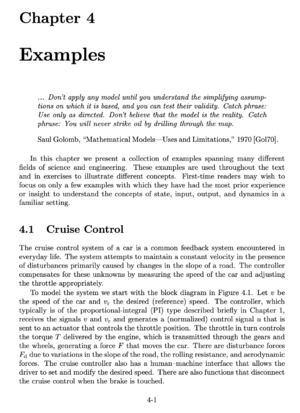Difference between revisions of "Examples"
Jump to navigation
Jump to search
| Line 4: | Line 4: | ||
|Previous chapter=System Modeling | |Previous chapter=System Modeling | ||
|Next chapter=Dynamic Behavior | |Next chapter=Dynamic Behavior | ||
| + | |First edition URL= | ||
|Chapter summary=In this chapter we present a collection of examples spanning many different fields of science and engineering. These examples are used throughout the text and in exercises to illustrate different concepts. First-time readers may wish to focus on only a few examples with which they have had the most prior experience or insight to understand the concepts of state, input, output, and dynamics in a familiar setting. | |Chapter summary=In this chapter we present a collection of examples spanning many different fields of science and engineering. These examples are used throughout the text and in exercises to illustrate different concepts. First-time readers may wish to focus on only a few examples with which they have had the most prior experience or insight to understand the concepts of state, input, output, and dynamics in a familiar setting. | ||
|Chapter contents=# [[Cruise control|Cruise Control]] | |Chapter contents=# [[Cruise control|Cruise Control]] | ||
Revision as of 21:26, 28 August 2021
| Prev: System Modeling | Chapter 4 - Examples | Next: Dynamic Behavior |
In this chapter we present a collection of examples spanning many different fields of science and engineering. These examples are used throughout the text and in exercises to illustrate different concepts. First-time readers may wish to focus on only a few examples with which they have had the most prior experience or insight to understand the concepts of state, input, output, and dynamics in a familiar setting.
Contents
- Cruise Control
- Bicycle Dynamics
- Operational Amplifier Circuits
- Computing Systems and Networks
- Web Server Control
- Congestion Control
- Atomic Force Microscopy
- Drug Administration
- Compartment Models
- Insulin--Glucose Dynamics
- Population Dynamics
- Logistic Growth Model
- Predator--Prey Models
- Exercises
